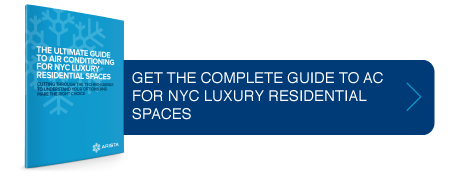We call it the Goldilocks Syndrome: it’s what happens when you get the wrong HVAC sizing for your residential space.
You’ll regret your choice when you get an air conditioner that’s too small or too big. Comfort is guaranteed when you get your HVAC sizing just right.Unfortunately, the Goldilocks Syndrome is all too common. Less-than-knowledgeable contractors automatically replace your air conditioner with the same size unit you had previously, or base the HVAC sizing decision purely on the square footage of your space.
In fact, there are many more factors that need to be considered to get your HVAC sizing correct.
You may be wondering, why does the size matter? Because your HVAC sizing has a big impact on both your comfort level and your spending level.
HVAC sizing matters
This is a case where size not only matters, but it’s critically important. If you get it wrong, you’ll fail to get the comfort you’re expecting from your new air conditioner, and you’ll increase your energy bills. This can be a shock when you’ve just shelled out a lot of cash for a high efficiency unit that winds up costing you MORE because it’s the wrong size.
What happens when your AC is too small
- It runs constantly trying in vain to cool your space to the set temperature.
- When the unit is running all the time, it uses a lot of electricity and drives up your energy bills.
- Your space is never cool enough.
What happens when your AC is too large
- The system will cycle on and off frequently (called short cycling), which also uses more electricity and drives up your bills.
- Short cycling leads to uneven cooling: temperature swings as well as hot and cold spots.
- Because the system only runs in short bursts, it never runs long enough to remove humidity, so your space feels sticky and warm.
- Increased moisture in the air can lead to mold and mildew growth.
- Short cycling also causes wear and tear on the parts, which means your unit will break down more often and wear out long before the typical life span.
Related Article: New York HVAC Systems: 8 Reasons Bigger Is Not Always Better.
When your HVAC sizing is just right
- Your space is consistently comfortable.
- Your unit works efficiently.
- Your energy costs are reduced.
How to get your HVAC sizing just right
Believe it or not, in the old days there were cardboard cutouts of different sizes that air conditioning installers used to estimate your square footage. The guy stood a certain distance away from the house and held up the cardboard cutouts to see which one matched your house. That’s how the size of the air conditioner was chosen. No surprise that there are many old systems in place that are incorrectly sized.
We can only hope that nobody is still using this method of load calculation, but there are plenty of people out there using the “rule of thumb” method. That is, eyeballing your space and guessing at the correct HVAC sizing based only on the approximate square footage of the space.
Or even worse, automatically replacing your old system with one of the same size. If the old one wasn’t sized correctly (which is likely), the new one won’t be right either. Especially if you’re doing a renovation and changing the layout and materials used to construct the space.
Determining the correct HVAC sizing for your space involves performing load calculations based on a variety of factors.
It’s actually a very scientific process called Manual J load calculation, developed by Air Conditioning Contractors of America (ACCA).
Factors used to determine the correct HVAC sizing
Calculations are done for each room in your space, and consider all of these factors that affect the heating and cooling requirements of the space:
- The climate where you live
- Square footage
- Building construction: brick, wood, or concrete
- Amount of insulation
- Amount of sun and shade the room gets
- The number of windows and doors, and which way they face.
- Presence and usage of lighting and heat-generating appliances.
In addition to the space-related factors, it’s also necessary to consider the usage of the space and the cooling needs of the occupants. Is someone home most of the time, which means the air conditioner needs to run for more hours each day? Is cooling needed primarily in one area, or will is be needed throughout the space at all times?
If you are going to be installing a ducted HVAC system, a similar Manual D calculation will also need to be done to determine the correct duct sizing and layout.
Related Article: 3 Steps for Buying a New Air Conditioner (The Right Way).
Trust the professionals to get your HVAC sizing just right
Obviously, calculating the load requirements for your new air conditioner is not a task you want to take on yourself unless you happen to be an HVAC expert.
To find someone qualified, seek out a MSCA or NATE certified HVAC company. That way, you can avoid the Goldilocks Syndrome and get HVAC sizing that’s just right for your needs.
If you’re shopping for a new air conditioner for your luxury NYC residence and confused by all the options, grab a copy of our helpful guide to figure out what’s the best choice for your space: The Ultimate Guide to Air Conditioning for NYC Luxury Residential Spaces.

